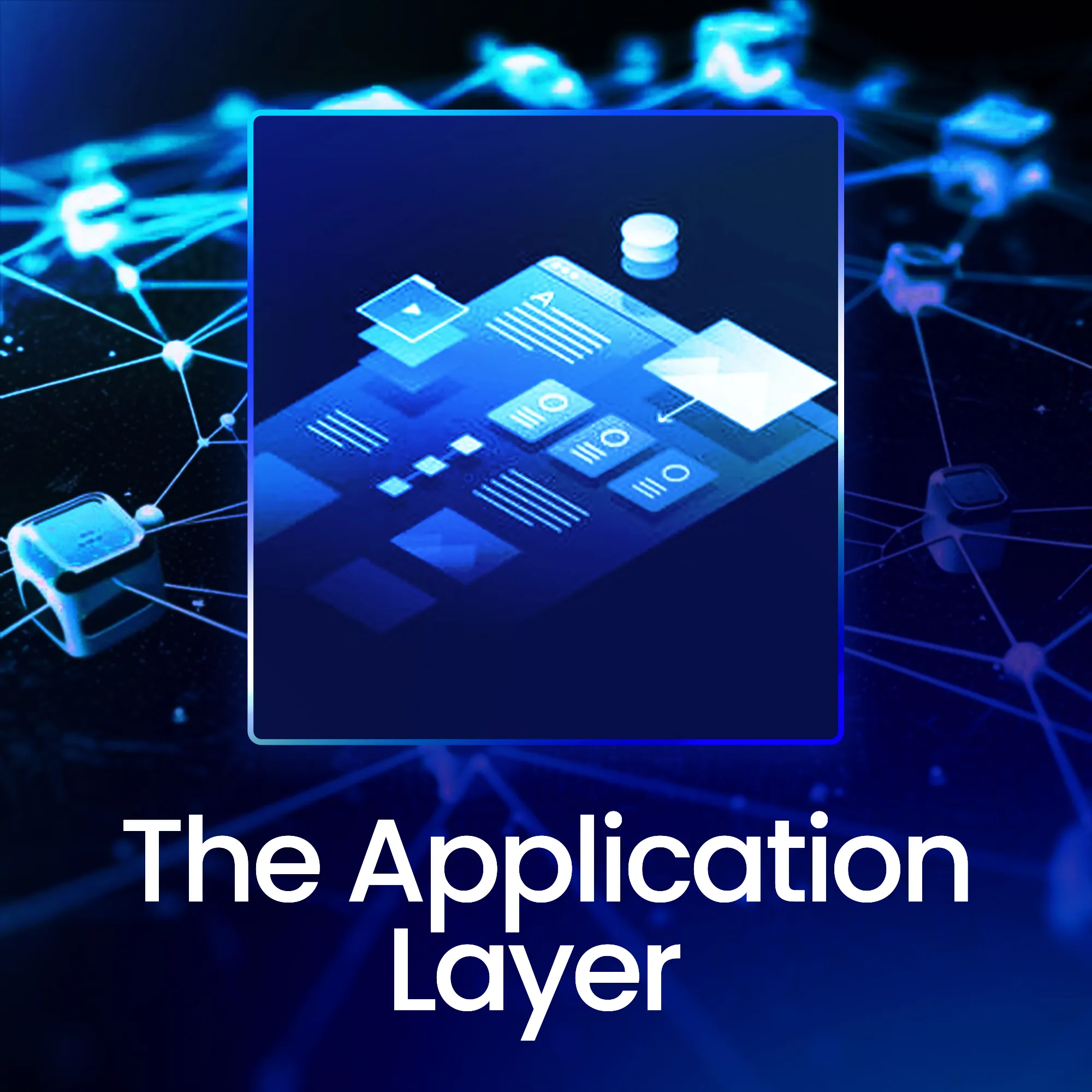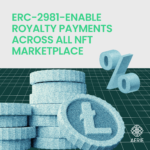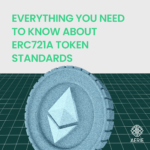Application Layer in Blockchain

When you hear the word ‘blockchain,’ what pops into your head? Cryptos, decentralized ledgers, and some complex algorithms, right? Well, you’re not alone. While these elements are indeed the backbone of blockchain, they’re not what most end-users directly interact with. Instead, users engage with the blockchain through a crucial layer known as the “Application Layer.” In this deep dive, we’ll explore the Application Layer of blockchain, its role, and the user-friendly solutions it brings to the forefront of this transformative technology.
Understanding the Application Layer
Sitting right at the top of the blockchain structure is the Application Layer. Think of it as the friendly face of the blockchain world. It’s the part that makes blockchain accessible and practical for individuals, techie or not.
Key Components of the Application Layer
1. Decentralized Applications (dApps)
Decentralized Applications, or dApps, are the crown jewels of the Application Layer. Instead of running on traditional centralized servers, these software applications operate on blockchain networks. The decentralized nature of dApps ensures transparency, security, and trustworthiness, making them an integral part of the blockchain ecosystem.
Cool dApps you might’ve heard of:
· Cryptocurrency Wallets: MetaMask and Trust Wallet, for instance, empower users to manage their digital assets securely.
· Decentralized Exchanges (DEXs): Platforms like Uniswap and SushiSwap enable users to trade cryptocurrencies without intermediaries.
· NFT Marketplaces: OpenSea and Rarible are dApps that facilitate the creation, buying, and selling of non-fungible tokens (NFTs).
2. Smart Contracts and Chaincode
Smart Contracts are self-executing contracts where the terms of agreement or conditions are written into lines of code. They operate on blockchain platforms such as Ethereum and execute automatically once predetermined conditions are met, making them a fundamental part of many blockchain applications.
In specific blockchain ecosystems, notably Hyperledger Fabric, the term used for smart contracts is “chaincode.” While they serve a similar purpose as smart contracts on platforms like Ethereum, they’re tailored to the unique architecture of Hyperledger Fabric.
Use Cases for Smart Contracts:
· Escrow Services: Smart contracts can securely hold funds in escrow and release them when predefined conditions are met.
· Decentralized Finance (DeFi): Many DeFi platforms rely on smart contracts for lending, yield farming, and liquidity provisioning.
· Tokenization: Smart contracts enable the creation and management of various tokens, including security tokens and utility tokens.
3. User Interfaces (UI) and User Experience (UX)
User interfaces are the graphical elements that users interact with when using blockchain applications. This part of the Application Layer ensures you don’t need a PhD in blockchain to get things done. A well-designed UI/UX makes sure that blockchain applications are accessible and user-friendly.
For example, a cryptocurrency wallet app’s user-friendly interface allows users to send and receive digital assets with ease. Users don’t need to understand the underlying blockchain technology intricacies; they simply interact with the app’s interface.
4. Web3 Integration
Web3 integration is a concept that seamlessly incorporates blockchain capabilities into traditional web applications. It means you can enjoy blockchain perks without jumping ship from your regular browsing sessions. It’s an important aspect of the Application Layer that connects the decentralized world of blockchain with the broader internet.
An example? MetaMask is this nifty browser extension with Web3 powers, making it a breeze for you to connect with dApps straight from your usual browser window.
The Significance of the Application Layer
The Application Layer plays a very important role in the adoption and usability of blockchain technology. Here’s why:
1. User-Friendly Access: By providing user-friendly applications and interfaces, the Application Layer makes blockchain technology accessible to individuals with varying levels of technical knowledge.
2. Expanding Use Cases: Through dApps and smart contracts, the Application Layer expands the use cases of blockchain technology beyond cryptocurrencies. It opens doors to decentralized finance, supply chain management, identity verification, and more.
3. Reducing Friction: User-friendly interfaces and seamless integration with traditional web applications reduce the friction associated with adopting blockchain solutions. This, in turn, encourages broader adoption.
4. Security and Trust: Blockchain’s transparent and tamper-resistant nature, combined with the Application Layer’s intuitive interfaces, enhances trust and security in digital transactions and agreements.
What’s Next?
The Application Layer’s made things a ton easier, but there’s still work to do. Issues like scalability, high transaction costs (gas fees), and interoperability between different blockchain networks are ongoing concerns. But with exciting projects like Layer 2 solutions in the pipeline, the future’s looking bright.
As blockchain keeps growing, the Application Layer’s gonna be front and center, guiding its journey into the mainstream. From snazzier interfaces to new applications and tackling scalability woes, innovators are ensuring blockchain will soon be as everyday as your morning coffee.
To wrap this up, the Application Layer is the gateway for users to access the transformative potential of blockchain technology. It simplifies the complex, letting us dive into decentralized apps, smart contracts, and more with ease. And hey, stay tuned! In our upcoming articles, we’ll dive deep into the other layers of the blockchain. You won’t want to miss it!









